How AI Works with Augmented and Virtual Reality for Businesses
January 22, 2024

Vivek Adatia
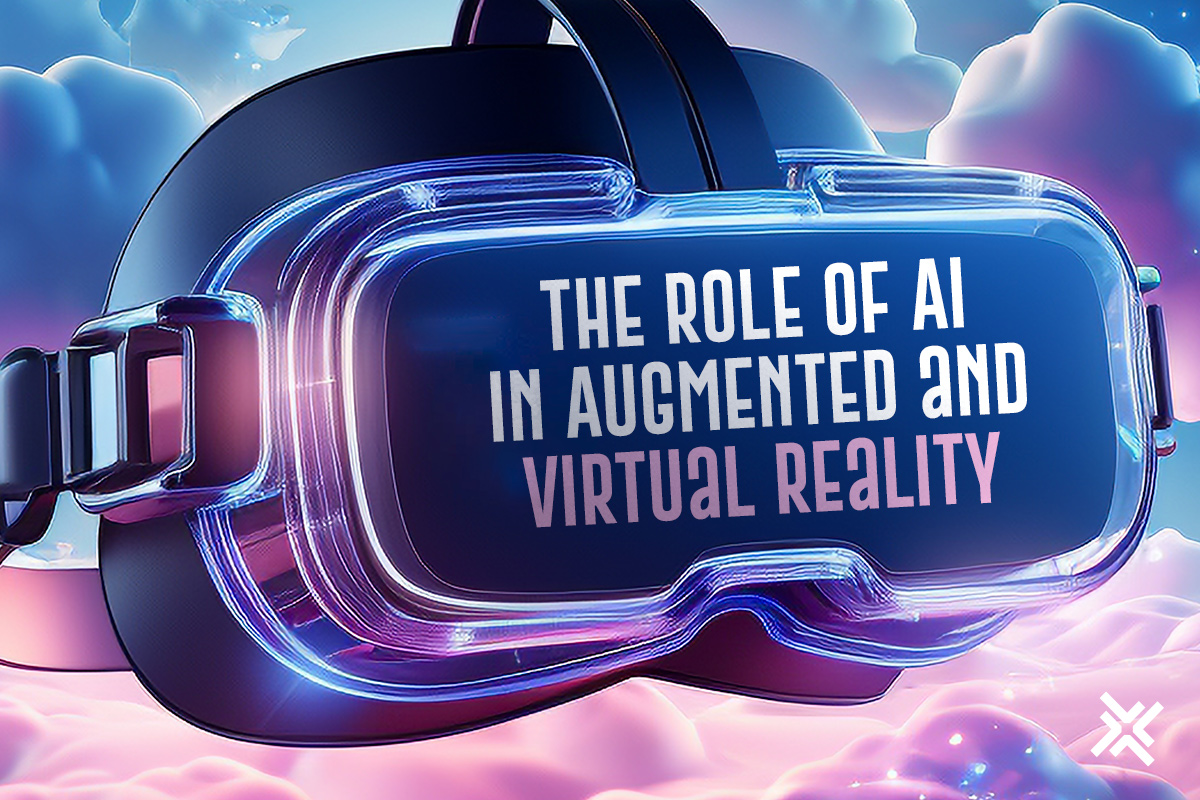
Augmented reality (AR) and virtual reality (VR) are two technologies that are changing the way we perceive and interact with the world. AR enhances our physical reality by overlaying digital information or objects on top of it, while VR creates a fully immersive and simulated environment that replaces our physical reality. Both AR/VR development services in UAE can create rich and engaging experiences that go beyond the limitations of traditional media and interfaces.
Both AR and VR are not just technologies for entertainment but powerful tools for transforming industries like education, healthcare, and more. Now, what if we add the smarts of AI (Artificial Intelligence) to this mix? That's where the real magic happens! AI makes AR and VR even cooler, bringing intelligence to our virtual adventures. It enables AR and VR to recognize objects, understand natural language, analyze data, and generate realistic simulations, along with delivering personalized and adaptive content that suits the preferences and needs of each user.
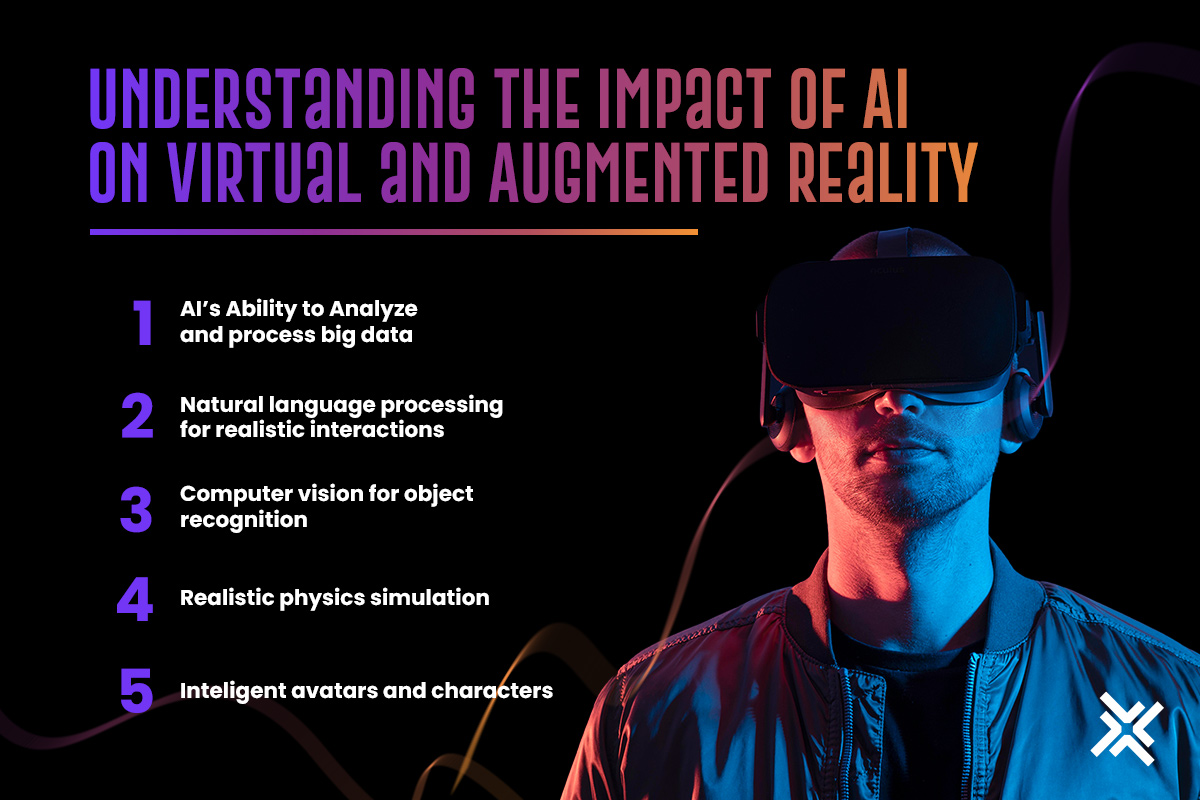
Let’s explore this awesome combination, learn what’s happening now, and envision the incredible things AI and AR/VR can achieve together.
Understanding Augmented Reality
Augmented Reality (AR) stands at the forefront of technological innovation, seamlessly blending the physical and digital worlds to enrich our daily experiences.
Overview of AR Technology
At its core, AR enhances our perception of reality by overlaying digital information onto the physical environment. Unlike Virtual Reality (VR), which creates fully artificial worlds, AR enhances the real world with relevant and interactive digital content. AR uses sensors, cameras, and display technologies to enable users to see and interact with both the physical and virtual layers at the same time. For example, AR can overlay directions on the street, show product reviews in a store, or display educational content on a museum exhibit.
The technology can create immersive and captivating experiences that transcend the boundaries of conventional media and interfaces. For instance, AR can transform a book into a 3D animation, a game into a real-life adventure, or a video call into a holographic meeting. By combining the best of both worlds, AR offers endless possibilities for enhancing our reality.
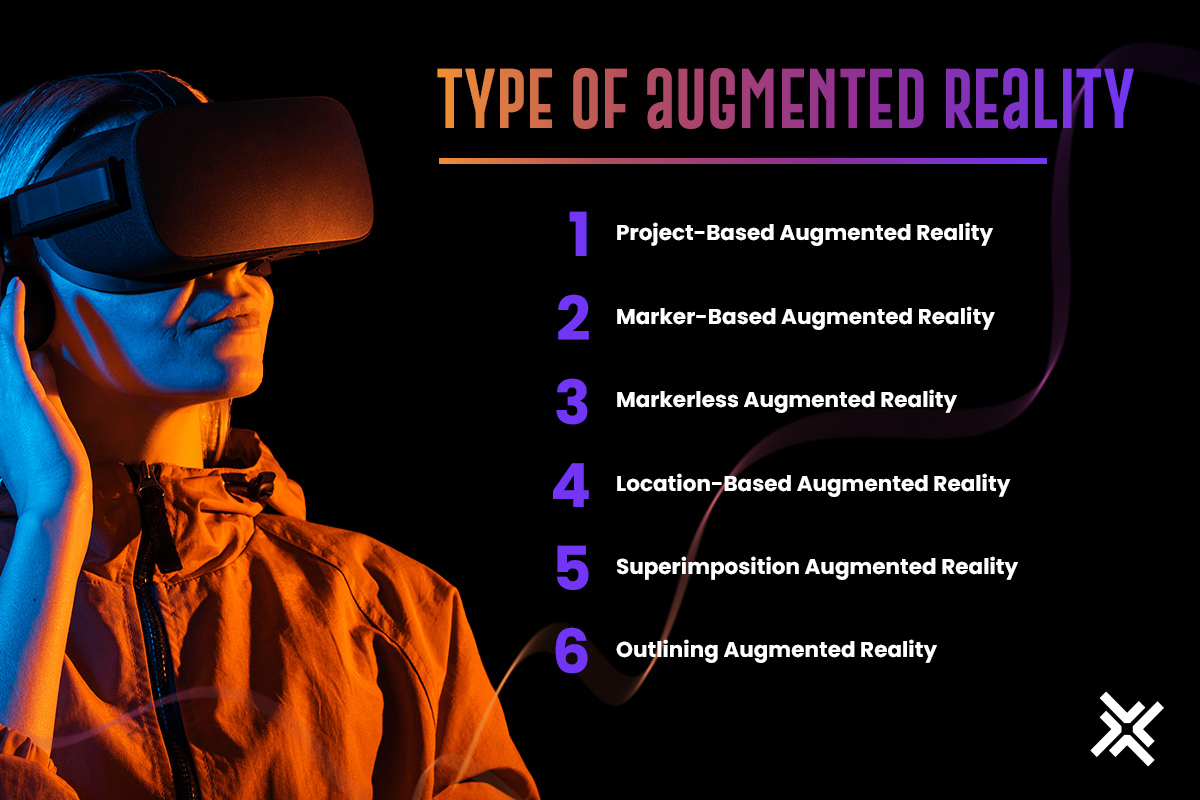
Real-world applications of AR
AR has a wide range of applications in various industries and domains.
Healthcare: AR can provide realistic and interactive simulations of medical procedures, anatomy, and diseases, as well as assist doctors in diagnosing and treating patients using AI-based analysis and guidance. For example, AR can help surgeons visualize the internal organs of a patient during surgery, or help nurses locate veins for injections.
Education: AR can create immersive and engaging learning environments that can enhance students’ motivation, retention, and performance, as well as provide AI-based feedback and assessment. To exemplify this, AR can help students learn about history by bringing historical figures and events to life, or help students learn about science by allowing them to interact with virtual models of atoms, molecules, and cells.
Manufacturing: AR can help engineers and technicians design, test, and optimize products and processes using AI-based modeling and optimization, as well as provide real-time assistance and troubleshooting using AI-based recognition and instruction. For instance, AR can help workers assemble complex machinery by showing them step-by-step instructions, or help workers inspect and repair faulty equipment by highlighting the problem areas.
Retail: AR can offer customers personalized and interactive shopping experiences that can increase their satisfaction and loyalty, as well as provide AI-based recommendations and insights. The most prominent example of this is how AR can help customers try on clothes, accessories, or makeup virtually. Apart from this, it can help customers visualize how furniture, appliances, or decorations would look like in their homes
How AI enhances AR experiences
AI plays a crucial role in enabling AR to create more realistic, interactive, and personalized experiences.
Object Recognition and Tracking
- Object Recognition and Tracking
AI plays a crucial role in improving AR technology by facilitating robust object recognition and tracking. Advanced algorithms powered by machine learning allow AR devices to identify and track objects in real-time, leading to more efficient integration of virtual elements into the user’s environment.
- Environmental Understanding
AI contributes to AR's environmental understanding capabilities by allowing devices to contextualize the user's surroundings. In other words, it allows AR to map and analyze the physical environment and adapt the digital content accordingly. This ensures that virtual overlays align accurately with the physical world and create a cohesive and immersive experience.
- Gesture and Emotion Recognition
Another dimension where AI significantly enhances AR experiences is in gesture and emotion recognition. AI algorithms allow AR to interpret and respond to users’ gestures and emotions using computer vision and machine learning. This provides a more intuitive and natural interaction and opens up new possibilities for hands-free control and personalized content delivery.
The synergy between AI and AR is continuously evolving and promises exciting advancements and innovative applications that will shape the future of interactive experiences.
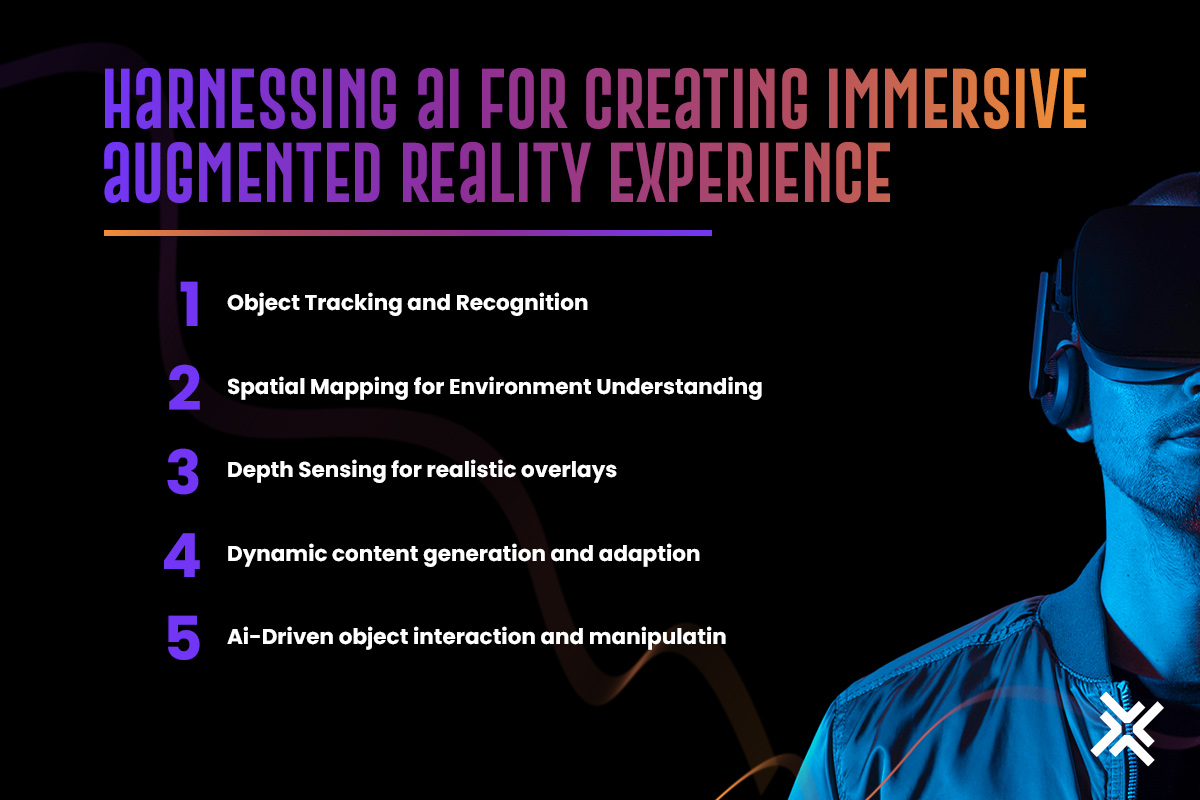
Understanding Virtual Reality (VR)
Virtual Reality (VR) is a technology that goes beyond the boundaries of the physical world, immersing users in simulated environments that can be both fantastical and realistic.
Overview of VR Technology
VR achieves its magic through advanced technologies that create a complete sensory experience for users. Headsets or Head-Mounted Displays (HMD), motion sensors, and haptic feedback systems work in tandem to transport individuals to entirely digital surroundings. This technology shuts out the physical world and replaces it with a computer-generated environment, thus allowing users to interact and navigate through this virtual space.
Real-world Applications of VR
The applications of VR span a myriad of industries, transforming the way we learn, work, and entertain ourselves. In healthcare, VR extends beyond surgical simulations to aid pain management and therapeutic interventions for anxiety disorders. Educational institutions harness VR for hands-on learning, providing practical experiences in various fields. Industries like manufacturing use VR for realistic training simulations, while global collaboration is facilitated through shared virtual spaces. VR is expanding its therapeutic reach into mental health treatments. Moreover, it revolutionizes tourism and allows users to explore landmarks and cultural sites virtually.
How AI Enhances VR Experiences
Intelligent Avatars
AI-driven intelligent avatars are transforming the VR scene. These avatars are not just pre-programmed characters; they adapt and respond to users' actions and emotions in real-time. This level of responsiveness enhances social interactions within virtual environments and makes the experience more dynamic and engaging.
Natural Language Processing in VR
AI-powered natural language processing (NLP) adds a conversational layer to VR experiences. Users can communicate with virtual environments using voice commands, and AI algorithms interpret and respond to natural language, making interactions within VR environments more intuitive and user-friendly.
Personalized Content Creation
AI contributes to the creation of personalized VR content customized to individual preferences and behaviors. Machine learning algorithms analyze user interactions and preferences and dynamically adapt the virtual environment to suit the user's interests. This personalization boosts immersion and ensures that VR experiences are not only captivating but also relevant to each user.
This ongoing collaboration between AI and VR changing the face of virtual reality, expanding the horizons of what is possible in immersive digital environments.
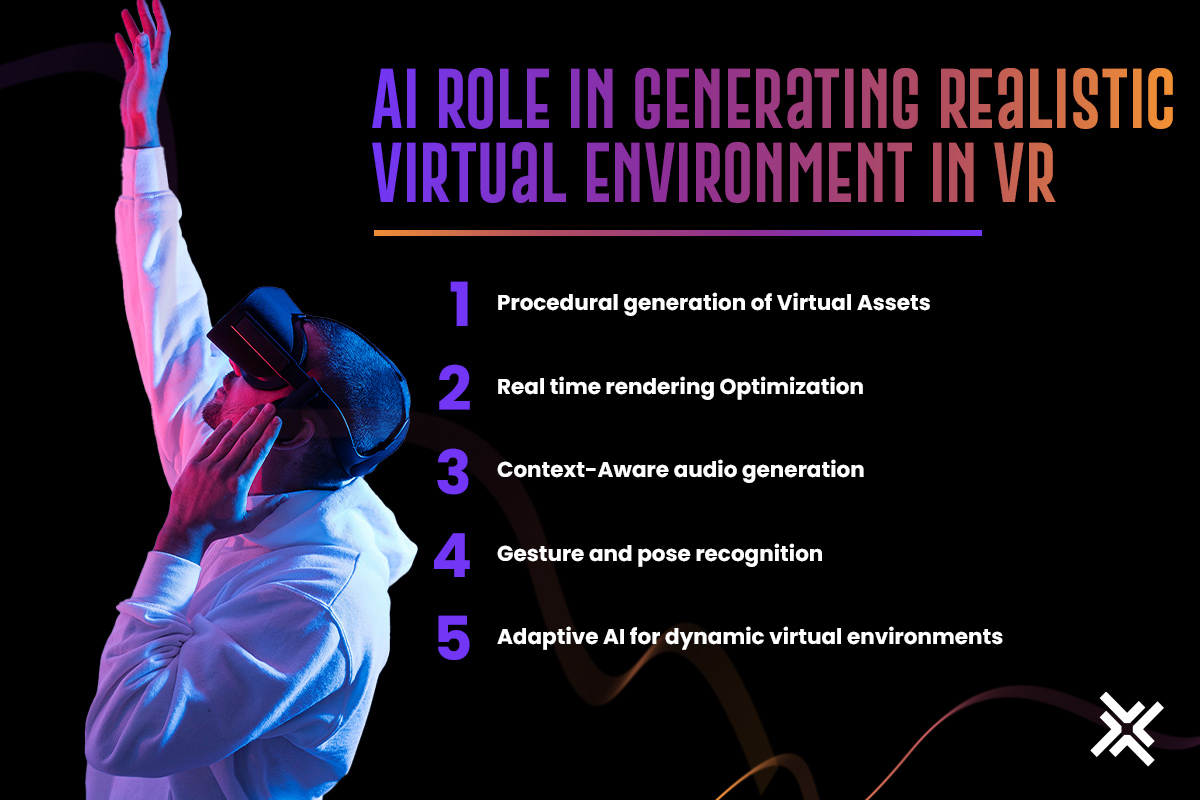
AI and the Convergence of AR/VR
AI is not only a key enabler of AR VR software development in UAE, but also a catalyst for the convergence of the two technologies. AR and VR are often seen as distinct technologies, but they share a common goal: to create immersive and interactive experiences that blend the physical and digital worlds. AI plays a vital role in creating a seamless AR/VR experience by enhancing the realism, interactivity, and personalization of the content.
The Role of AI in Creating a Seamless AR/VR Experience
AI is the key to achieving a smooth and realistic fusion of the real and virtual worlds. AI-powered algorithms enable digital content to blend seamlessly with the physical environment, improving interactivity and feedback. For example, AI improves AR applications by detecting and following objects in real time, making sure that virtual elements fit perfectly with the physical world. This mutual benefit not only enhances user experiences but also creates opportunities for useful applications, such as AR-assisted navigation or immersive product showcases in retail settings.
AI-driven Simulations and Environments
AI adds a level of flexibility and sophistication to simulations and virtual environments. In training scenarios, machine learning algorithms allow AI to adapt to user actions, creating simulations that evolve according to individual behavior. This flexibility improves the realism of training experiences, a benefit for sectors like healthcare where realistic, evolving simulations are essential for medical professionals improving their skills. The outcome is not just a simulation but an intelligent environment that reacts to user input, creating a more engaging and efficient training ground.
Beyond training, AI-driven environments in VR expand into entertainment, where virtual worlds vary based on user choices, creating customized, ever-changing narratives in gaming and interactive storytelling.
Adaptive Learning and Personalization in AR/VR Content
AI's intelligence extends to learning experiences within AR and VR, creating adaptive learning systems that suit individual preferences. These systems monitor user interactions, measuring understanding and engagement levels. In educational settings, this means customized content delivery that matches each student’s learning style. Likewise, in professional training, AI ensures that employees get content that is relevant to their roles, adjusting the learning pace based on individual progress.
New advances in AI are driving innovations in gaze-tracking technology, allowing AR and VR systems to comprehend user focus and optimize content delivery. This not only improves the immersive quality of experiences but also leads to more effective learning outcomes.
The convergence of AR and VR not only creates a new reality but also offers a range of opportunities, where smart, flexible environments improve our learning, abilities, and fun in ways we never thought possible. The exploration of this domain of convergence is a constant journey, offering new prospects and discoveries along the way.
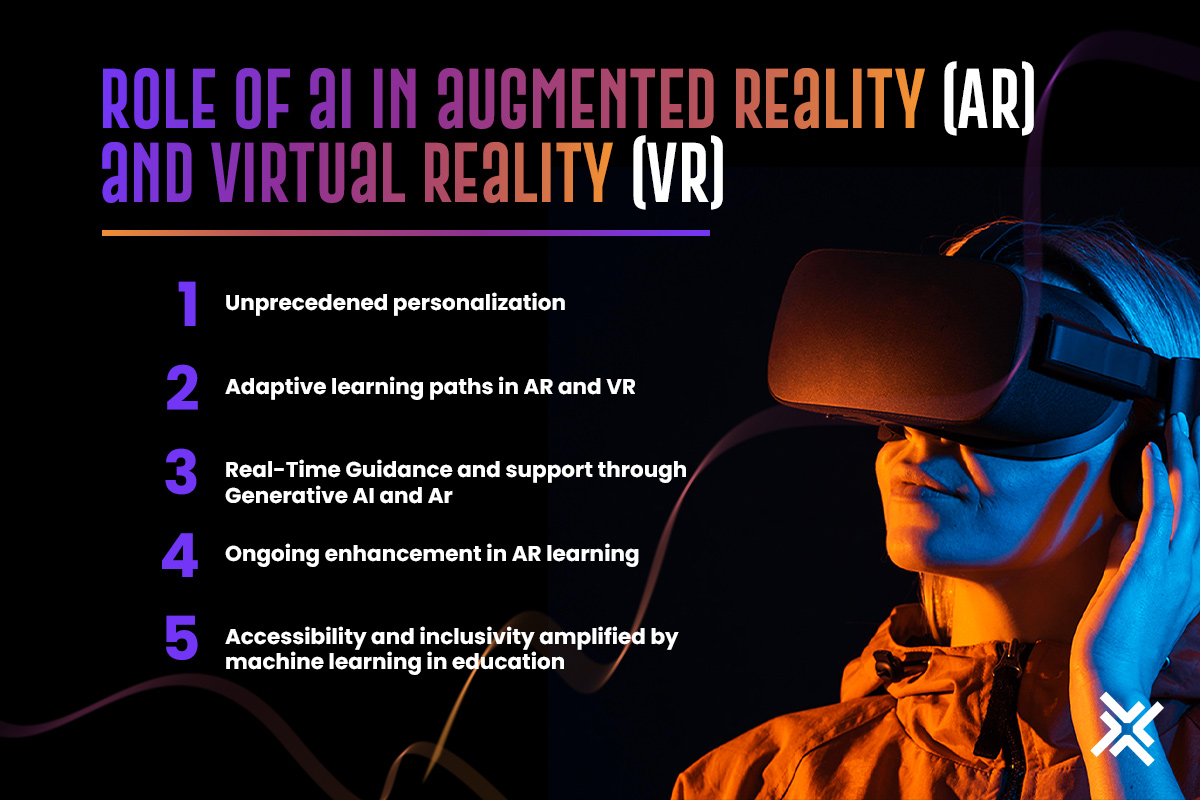
Challenges and Solutions in AI-powered AR/VR
While the benefits and applications of integrating AI in AR/VR app development services in UAE are plentiful, the technology is not without its share of challenges.
Current Challenges in AI-powered AR/VR
- Processing Power Limitations:
The demand for real-time, high-quality AR/VR experiences places immense pressure on processing power. Achieving efficient interactions in complex environments requires overcoming the current limitations of hardware.
- Data Privacy Concerns:
The nature of AR/VR applications involves collecting and processing significant amounts of user data. Balancing the need for personalized experiences with user privacy is a persistent challenge.
- User Interface and Interaction Hurdles:
Designing intuitive and user-friendly interfaces for AR/VR experiences is an ongoing challenge. Navigating within virtual environments and interacting with virtual elements requires a delicate balance between functionality and simplicity.
Solutions and Advancements in Overcoming Challenges
- Advancements in Hardware:
Innovations in hardware, including more powerful GPUs and processors, are addressing the processing power challenge. Edge computing, which processes data closer to the source rather than relying solely on centralized servers, is gaining prominence, improving real-time responsiveness.
- Privacy-centric Design:
AR VR Developers are adopting privacy-centric design principles, implementing measures like data anonymization and giving users more control over their data. Additionally, decentralized technologies, such as blockchain, are being explored to secure and manage user data in AR/VR applications.
- Improved User Interfaces:
Continuous research and development are refining user interfaces in AR/VR. Advancements in gesture recognition, eye-tracking technology, and haptic feedback contribute to more intuitive interactions. This makes the user experience more natural and engaging.
Ethical Considerations in AI-driven AR/VR Experiences
The integration of AI in AR/VR introduces ethical considerations that demand careful attention. Issues such as algorithmic bias, data privacy violations, and potential abuse of AI-generated content highlight the need for ethical standards and regulations. Industry stakeholders are working together to create ethical frameworks, focusing on transparency, fairness, and user consent to ensure that AI-driven AR/VR experiences put user well-being first.
Dealing with these challenges and ethical issues is crucial for the ethical development and widespread adoption of AI-powered AR/VR technologies. As progress continues, a proactive approach to solving these challenges ensures a future where immersive experiences are not only technologically advanced but also ethical, secure, and user-centered.
Industry Applications
With the integration of Artificial Intelligence (AI) into Augmented Reality (AR) and Virtual Reality (VR), amazing things are happening across different areas.
Healthcare
Healthcare is one of the most important and promising domains for AI-powered AR/VR solutions. These solutions can provide realistic and interactive simulations of medical procedures, anatomy, and diseases, as well as assist doctors in diagnosing and treating patients using AI-based analysis and guidance. They can even provide therapeutic and rehabilitation benefits for patients with various physical and mental conditions, such as chronic pain or post-traumatic stress disorder.
- Surgical Simulations:
AI and AR/VR team up to help surgeons practice in a virtual world. It's like a smart video game where AI gives instant feedback, making training personalized and improving real surgeries. Examples include the VR surgery simulator developed by Osso VR, which allows doctors to practice and improve their skills in a virtual operating room, and the AR surgery platform developed by Medvis, which overlays 3D automatic models and surgical guidance on the patient’s body.
- Rehabilitation and Therapy:
In healthcare, AI in AR/VR helps people recover by creating personalized virtual exercises. It's like having a virtual coach that adapts to each person, making therapy more effective and engaging. For instance, the VR platform developed by Oxford VR provides exposure therapy for various mental health conditions, such as anxiety, phobia, or depression.
Education and Training
AI-enhanced AR/VR solutions can offer immersive and effective learning environments that can enhance students’ motivation, retention, and performance, as well as provide feedback and assessment. They can also provide innovative and efficient solutions for various training processes, such as product design, marketing, and collaboration.
- Virtual Classrooms:
AI joins hands with AR/VR to make learning super fun. Students can explore history in 3D or perform cool science experiments in a virtual classroom. AI makes sure each student learns in their own way, making lessons more interesting.
- Job Training Simulations:
For jobs like fixing things or handling emergencies, AI in AR/VR creates lifelike simulations. It adjusts the difficulty based on how well someone is doing, helping them learn and be ready for real situations.
Gaming and Entertainment
AI in AR/VR makes games, movies, sports, and music super cool and fun! It creates lifelike worlds, characters, and stories that one can dive into and play around with. Users can enjoy playing a game where everything is so lifelike, or watching a movie where they are not just watching but part of the adventure.
- AI-driven Characters and Storylines:
In games, AI makes characters smarter. They learn from how players act, making each game unique. It's like playing a story that changes based on what you do, thanks to AI making it more exciting.
- Immersive Gaming Experiences:
With AI and AR/VR, gaming becomes super immersive. AI can add surprises like changing weather or characters reacting differently. It's like being in a game that feels real, making it way more fun.
Recent Innovations and Trends
The field of AI-powered AR/VR is constantly evolving and improving, thanks to the cutting-edge technologies and industry trends that are shaping its future.
Cutting-edge Technologies in AI-Driven AR/VR
Numerous advanced technologies are being developed and applied in the domain of AI-driven AR/VR. Here are some of the most prominent ones.
- Generative AI: With the ability to create and modify content using text-based prompts, such as descriptions, commands, or questions, Generative AI can allow users to use natural language and create 3D landscapes, textures, and animations.
- Brain-Computer Interfaces: This involves utilizing AI to communicate and interact with the user’s brain using sensors and electrodes. Brain-computer interfaces can enable the user to control and influence the content in AR/VR using their thoughts and emotions, such as changing the color, shape, or sound of the content.
- Machine Learning for Real-time Adaptations: Advanced machine learning algorithms are enhancing real-time adaptability in AR/VR environments. These technologies assist systems in learning from user behavior, adapting content and interactions on the fly for a more personalized and responsive experience.
- Spatial Computing: Spatial computing is revolutionizing how we interact with AR/VR. By leveraging AI to understand spatial relationships, AR/VR applications can place virtual objects more accurately in the real world, creating a more accurate and convincing user experience.
Industry Trends Shaping the Future of AR/VR with AI
AI-enhanced AR/VR solutions are not only advancing in terms of technology but also in terms of industry adoption and impact. Some of the industry trends defining the future of AR/VR with AI are:
- Augmented Reality in Retail: AR, powered by AI, is reinventing the retail sector. Virtual try-ons, AI-driven product recommendations, and immersive shopping experiences are becoming increasingly popular, creating a blend of online and offline retail interactions.
- 5G Integration: The integration of 5G technology is changing the game for AI-driven AR/VR. The high-speed, low-latency connectivity enables more immersive and responsive experiences, pushing the boundaries of what is possible in real-time interactions and content delivery.
- Extended Reality (XR) Integration: The convergence of Augmented Reality (AR), Virtual Reality (VR), and Mixed Reality (MR) into Extended Reality (XR) is a notable trend. AI is instrumental in unifying these experiences, creating efficient transitions between the virtual and real worlds for more holistic and versatile applications. AI-powered Biometrics for Enhanced Personalization: The incorporation of AI-driven biometrics, such as facial recognition and gaze tracking, is a growing trend. This allows AR/VR systems to adapt content based on user emotions, preferences, and attention, enhancing personalization and engagement.
- Blockchain for Enhanced Security: The utilization of blockchain technology in AR/VR with AI is emerging as a trend to address security concerns. Blockchain ensures secure and transparent transactions, data privacy, and authentication, crucial for maintaining the integrity of user data in immersive environments.
- Voice and Natural Language Interaction: The integration of AI-driven voice recognition and natural language processing is gaining prominence. This allows users to interact with AR/VR environments using voice commands, making the experience more intuitive and user-friendly.
Success Stories and Case Studies
AI-driven AR/VR solutions have proven to be successful and impactful in various industries and domains, as evidenced by the success stories and case studies that showcase the value and benefits of the solutions.
- Walmart: Walmart has been using AI-powered VR solutions to train its employees and improve its operations. It has partnered with Strivr, a VR training platform, to provide immersive and realistic training scenarios for its employees, such as customer service, inventory management, and emergency situations. Walmart has reported that the VR training has improved the employees’ confidence, retention, and performance, as well as reduced the training time and cost.
- Boeing: Boeing is one of the leading aerospace companies in the world, and it has been using AI-powered AR solutions to assist its engineers and technicians in designing, testing, and maintaining its products and processes. Boeing in cooperation with Upskill, an AR platform, provides real-time assistance and guidance for its workers, such as showing them step-by-step instructions, highlighting the problem areas, and providing feedback and analytics.
- National Geographic: National Geographic has been using AI-powered AR/VR solutions to educate and entertain its audience and customers. It has launched various AR/VR experiences, such as the AR app that allows users to explore the world and its wonders, or the VR documentary that allows users to experience the life of a gorilla. National Geographic has reported that the AR/VR solutions have increased the engagement, retention, and satisfaction of its audience and customers, as well as enhanced its brand image and reputation.
- IKEA Place App: IKEA's Place app is a stellar example of AI-driven AR success. The app allows users to virtually place furniture in their homes using AR, powered by AI algorithms that understand spatial dynamics and lighting conditions for a realistic preview
- Medical Training with Touch Surgery: Touch Surgery employs AI-driven VR simulations for medical training. Surgeons can practice procedures in a virtual environment, with AI providing personalized feedback and adaptive challenges, contributing to improved real-world surgical outcomes.
Future Outlook
The convergence of AI, AR, and VR with emerging technologies will create plentiful new possibilities and opportunities for the future.
Emerging Technologies on the Horizon
- Neural Interfaces and Brain-Computer Interfaces (BCI): The development of neural interfaces and BCIs is on the horizon. It presents a futuristic avenue for AR/VR interactions, as AI would play a pivotal role in interpreting neural signals. This will allow users to engage with digital environments through their thoughts.
- Quantum Computing: The advent of quantum computing has profound implications for AI-driven AR/VR applications. The immense computational power offered by quantum computers could open up new possibilities in simulation, rendering, and complex AI algorithms, pushing the boundaries of immersive experiences.
Anticipated Advancements in AI and AR/VR Integration
- Enhanced Realism through AI-driven Graphics: Future advancements in AI-driven graphics promise hyper-realistic visuals in AR/VR environments. Generative AI models could dynamically create lifelike textures, lighting, and objects, elevating the realism of virtual worlds.
- Multi-sensory Experiences: AI is expected to facilitate multi-sensory experiences in AR/VR. Integrating technologies like smell and touch alongside visual and auditory stimuli could create more holistic and engaging virtual environments.
- Continued Personalization through AI: The future holds a deeper level of personalization in AR/VR experiences. AI algorithms will become even more adept at understanding individual preferences, behaviors, and learning styles, personalizing immersive content with unprecedented precision.
Conclusion
AI in AR/VR has a huge potential to transform various aspects of our lives. From changing industries to reshaping how we learn, work, and have fun, AI enables immersive experiences that once seemed to be science fiction. The combination of AI with AR/VR improves realism, personalization, and interactivity, creating a symbiotic relationship that pushes the boundaries of what is conceivable.
As we conclude, the Integration of AI in AR/VR invites further exploration. It involves facing the challenges and opportunities that await us. Whether it’s dealing with ethical considerations, addressing technological hurdles, or conceptualizing new applications, the collaborative efforts of AR & VR development companies, along with the global community are essential for unlocking the full potential of AI in AR/VR. The transformative effect of AI in AR/VR is an ongoing narrative, and the story is far from its conclusion.
Looking to harness the power of AI for your AR/VR project?
AI can disrupt the already incredible potential of AR/VR technologies. Partner with us at WDCS Technology to integrate AI into your augmented and virtual reality applications.